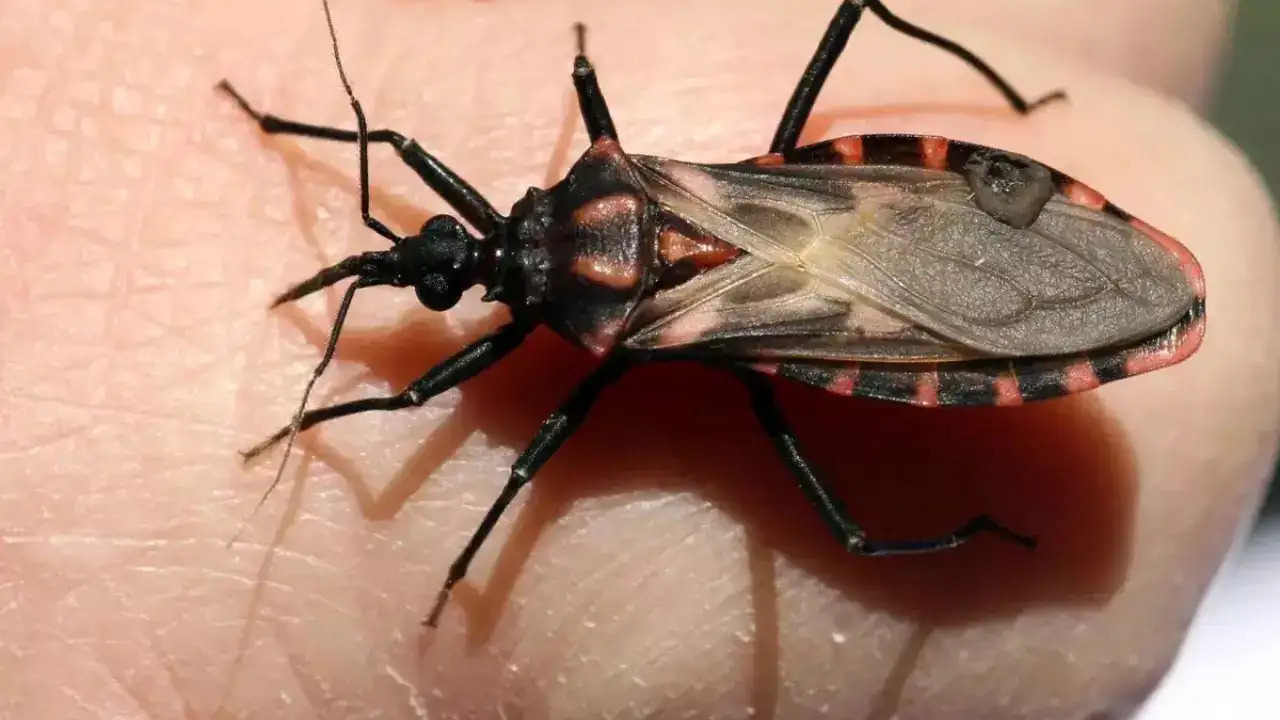
DiYES International School – Kissing Bug has quickly become a terrifying term in public health conversations after reports confirmed the spread of Chagas disease to 32 states in the U.S. The bug earned its nickname due to its tendency to bite humans on the face while they sleep. This insect carries a parasite known as T. cruzi, which causes Chagas disease in humans. Once bitten, the parasite can enter the bloodstream when the victim scratches the itchy area, potentially leading to life-threatening health complications.
Although the disease has been associated primarily with Latin America in the past, new reports suggest the U.S. is now facing an expanding threat. According to CDC data, over 300000 people in the country may be infected, yet fewer than 2 percent are aware of their condition. States across the South and Southwest are especially affected. Public health officials now urge increased awareness as infections continue to rise and remain largely undetected by the population.
Kissing Bug activity has been confirmed in multiple states, making the risk far more widespread than most Americans realize. Human infections have been identified in Arizona, Texas, Louisiana, Missouri, Mississippi, Arkansas, Tennessee, and California. Meanwhile, Chagas disease has also been found in animals across states like New Mexico, Oklahoma, Florida, Georgia, and Virginia. The Centers for Disease Control and Prevention continues to track the presence of these insects through maps and public reporting.
In California alone, it is estimated that 45000 individuals in Los Angeles County might already be infected without knowing it. This silent spread of the disease poses a major concern, as people often remain undiagnosed until complications develop. Kissing Bug sightings are not limited to rural areas either. Urban and suburban regions have also reported encounters. The bug’s expanding territory has raised alarms among entomologists and infectious disease experts, who emphasize that active surveillance and public education must be intensified immediately.
“Read about: Did Tylenol Cause Autism? RFK Jr. and HHS Drop Explosive New Connection”
Early symptoms of Chagas disease are frequently mistaken for more common illnesses, making timely diagnosis a significant challenge. Fever, fatigue, body aches, headache, vomiting, and diarrhea are among the initial symptoms. However, one telltale sign is severe swelling of the eyelid, especially when the parasite enters through the face. This condition has been described by UCLA researchers as a hallmark of acute Chagas infection.
Unfortunately, many people do not seek medical attention until the disease progresses. Once chronic symptoms appear, they can be severe and life-altering. The parasite may cause damage to the heart and digestive organs over time. An enlarged heart, heart failure, or cardiac arrest are among the potential long-term consequences for 20 to 30 percent of those infected. Lack of awareness about the initial indicators contributes to underdiagnosis. The need for widespread education on how to recognize early symptoms is increasingly urgent as the disease continues to spread across more regions.
“Read more: Royal Family in Mourning: The Duchess of Kent Dies Peacefully at 92”
Chagas disease is called a silent killer due to slow progression and lack of early visible symptoms. The disease can stay hidden for years before causing severe cardiovascular issues. Once the parasite enters the body, it targets and damages muscle tissues, especially in the heart. This condition may result in arrhythmia, heart enlargement, or digestive problems like constipation and difficulty swallowing. Some individuals may suffer sudden cardiac arrest without prior warning signs or symptoms.
Health officials urge residents in affected areas to be alert to insect bites and strange reactions. Kissing Bug bites can seem minor but lead to serious health risks if the parasite enters the bloodstream. CDC and UCLA Health recommend early screening for those in high-risk areas or from Latin America. Travelers returning from endemic regions should also get checked even without symptoms. Timely antiparasitic treatment can help slow down or stop the disease progression if detected early.
The Centers for Disease Control and Prevention recommends classifying Chagas disease as endemic in the United States. Endemic refers to conditions regularly found within a specific geographic region or population. Experts believe rising undetected cases in the U.S. justify the proposed reclassification. UCLA Health shares concerns about the Kissing Bug and growing public unawareness. They warn the situation could lead to a national health crisis if not addressed. In Latin America, where the disease is endemic, health strategies include routine screening and awareness campaigns. The United States has not yet implemented similar large-scale public health initiatives. Researchers urge stronger disease surveillance and better healthcare guidelines across affected regions. Clinicians also request more government funding to handle this growing threat effectively. Calling Chagas disease endemic may push medical leaders and officials to act immediately.